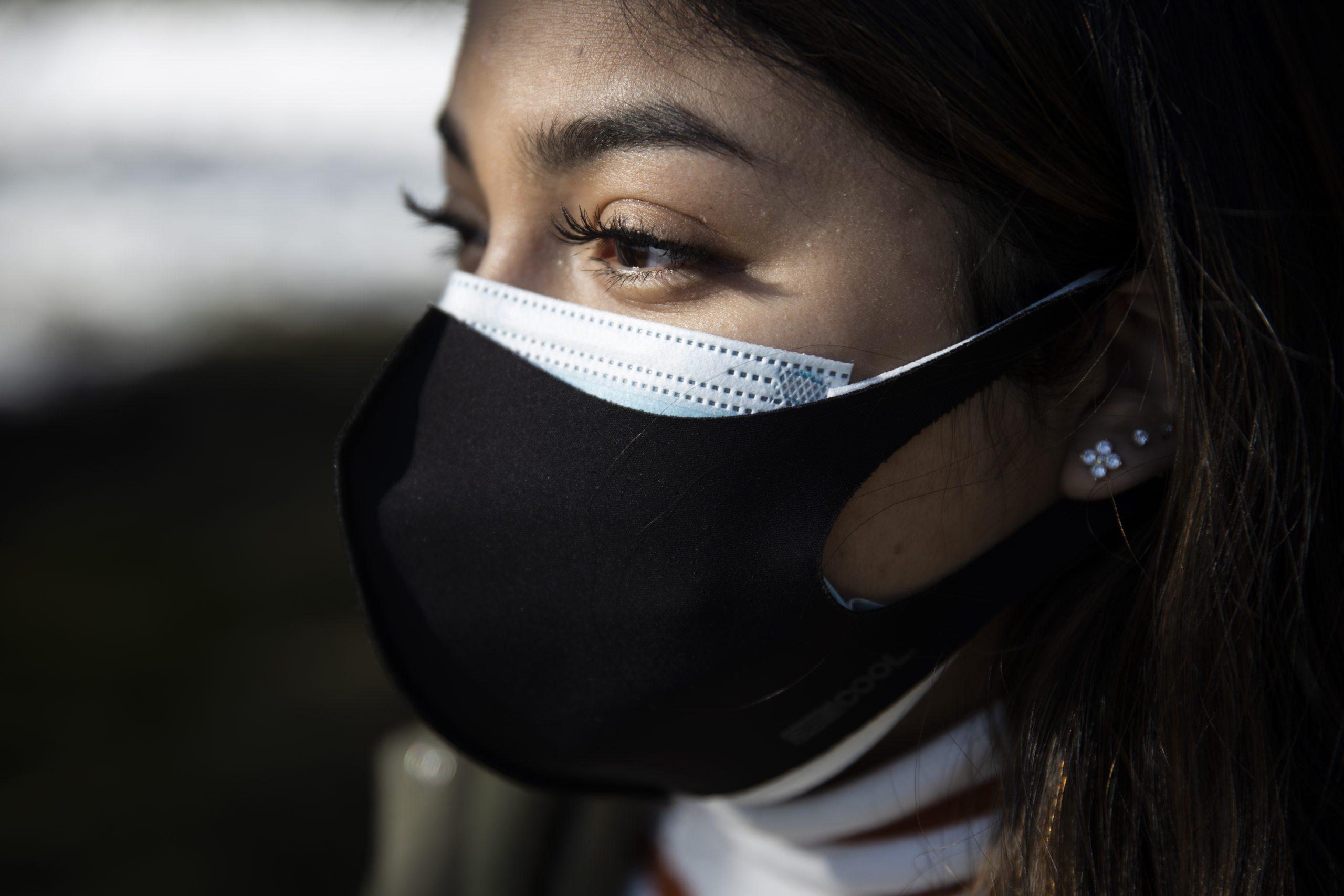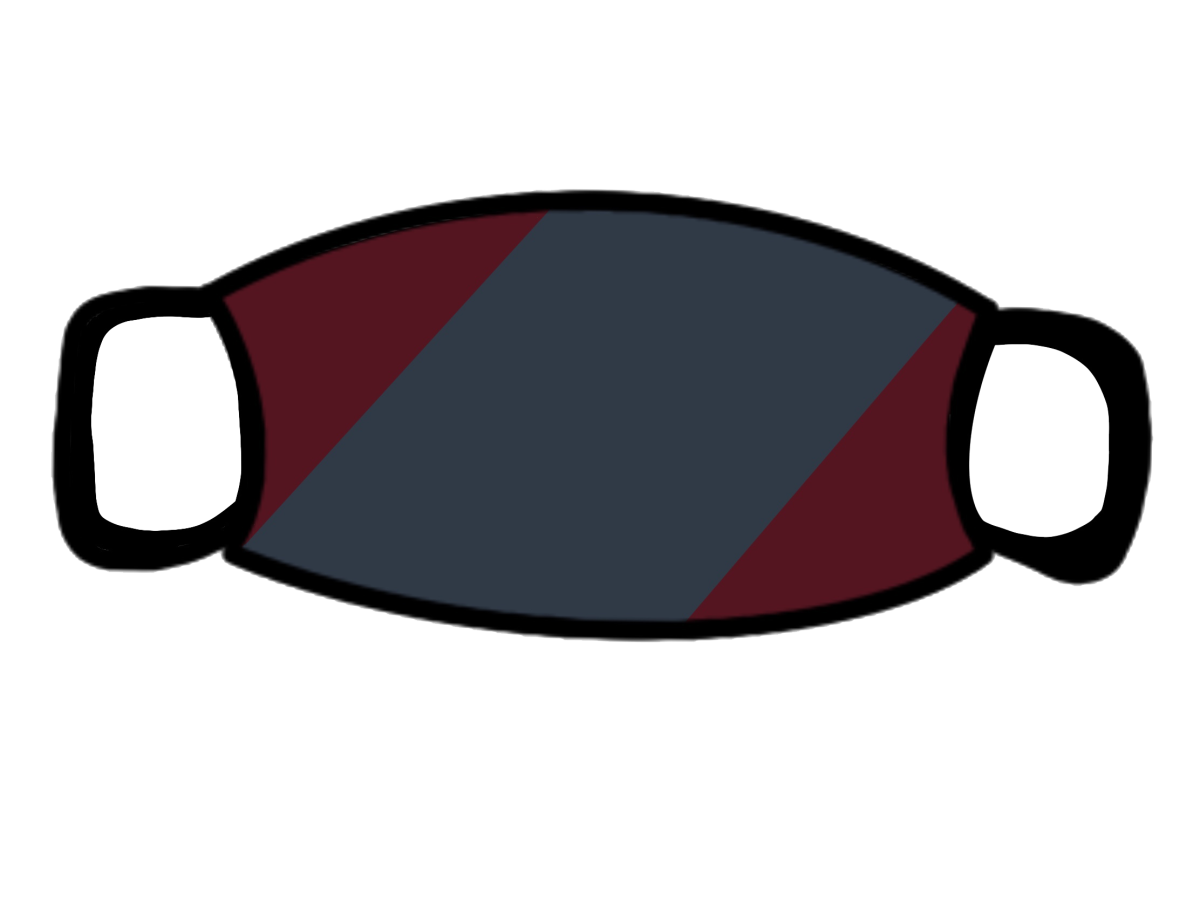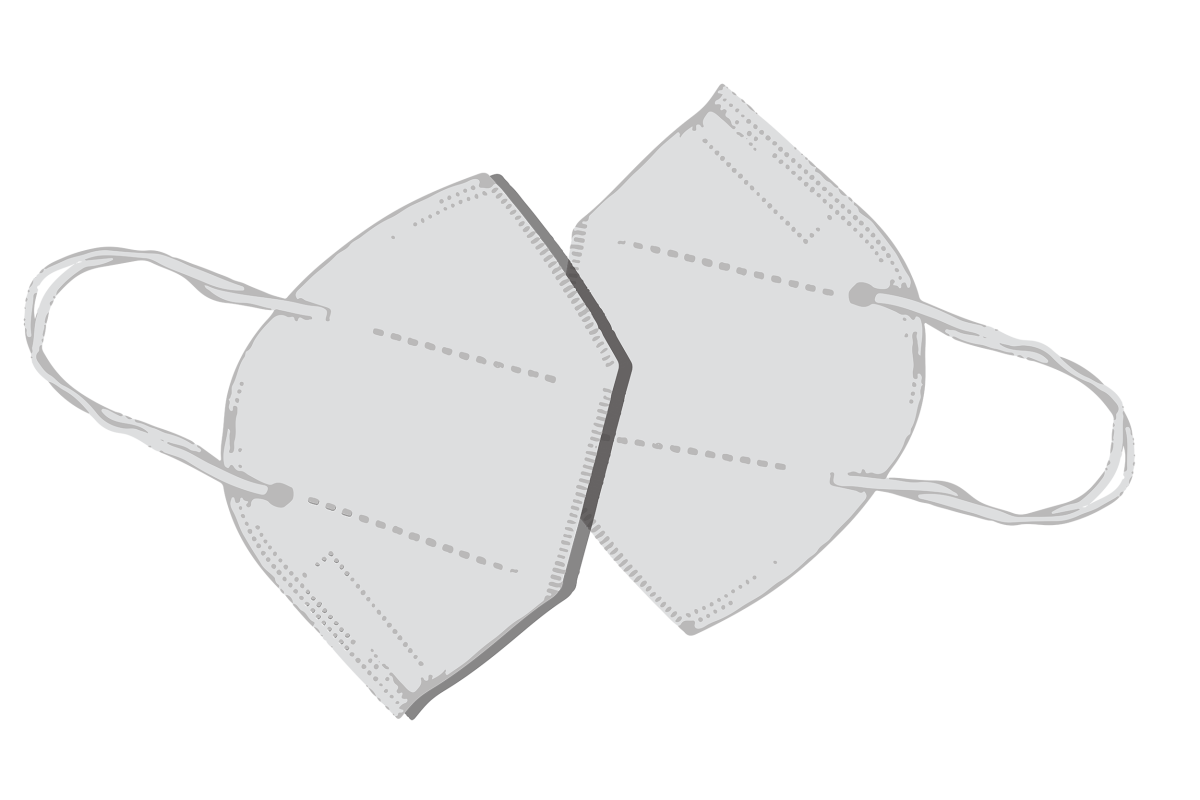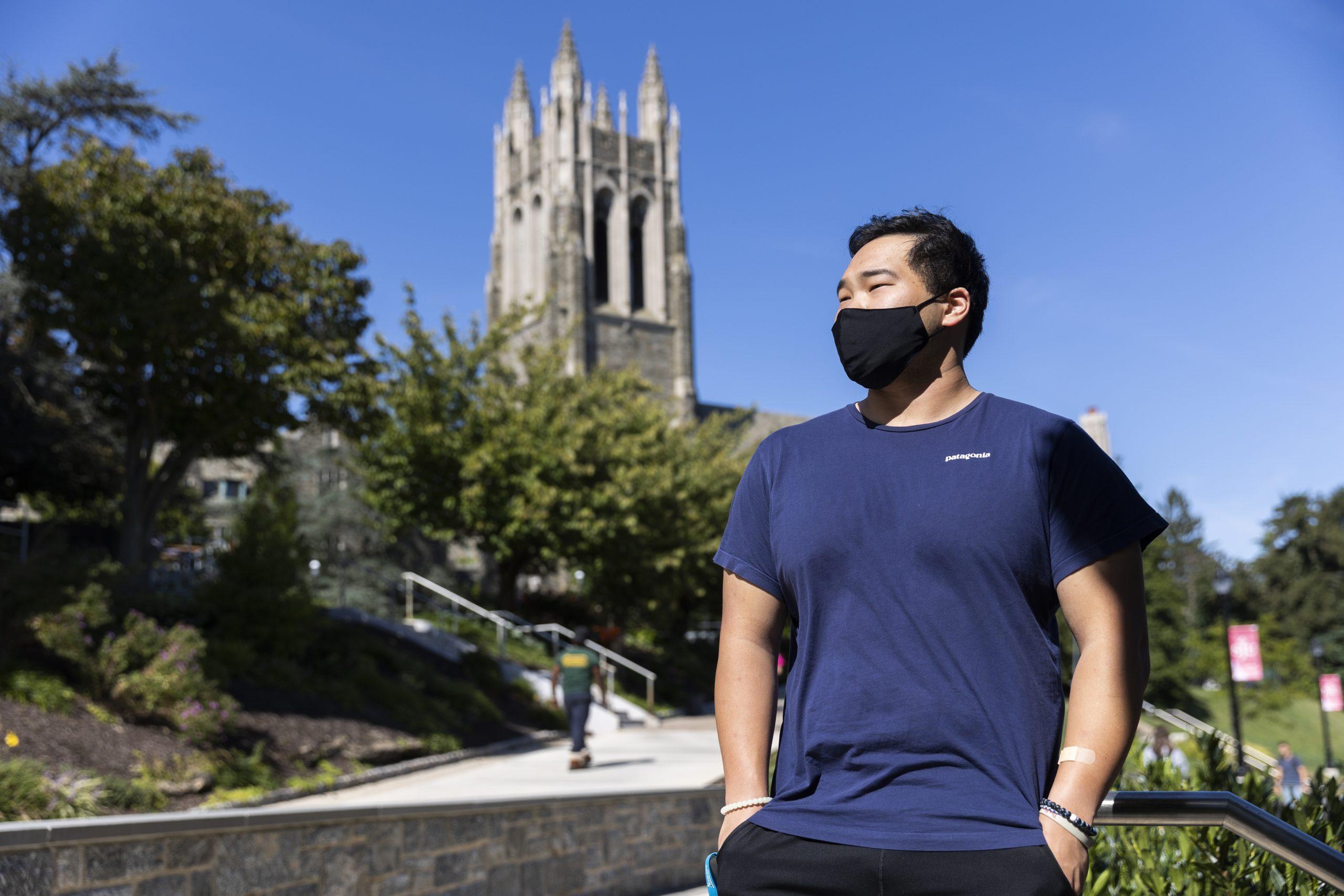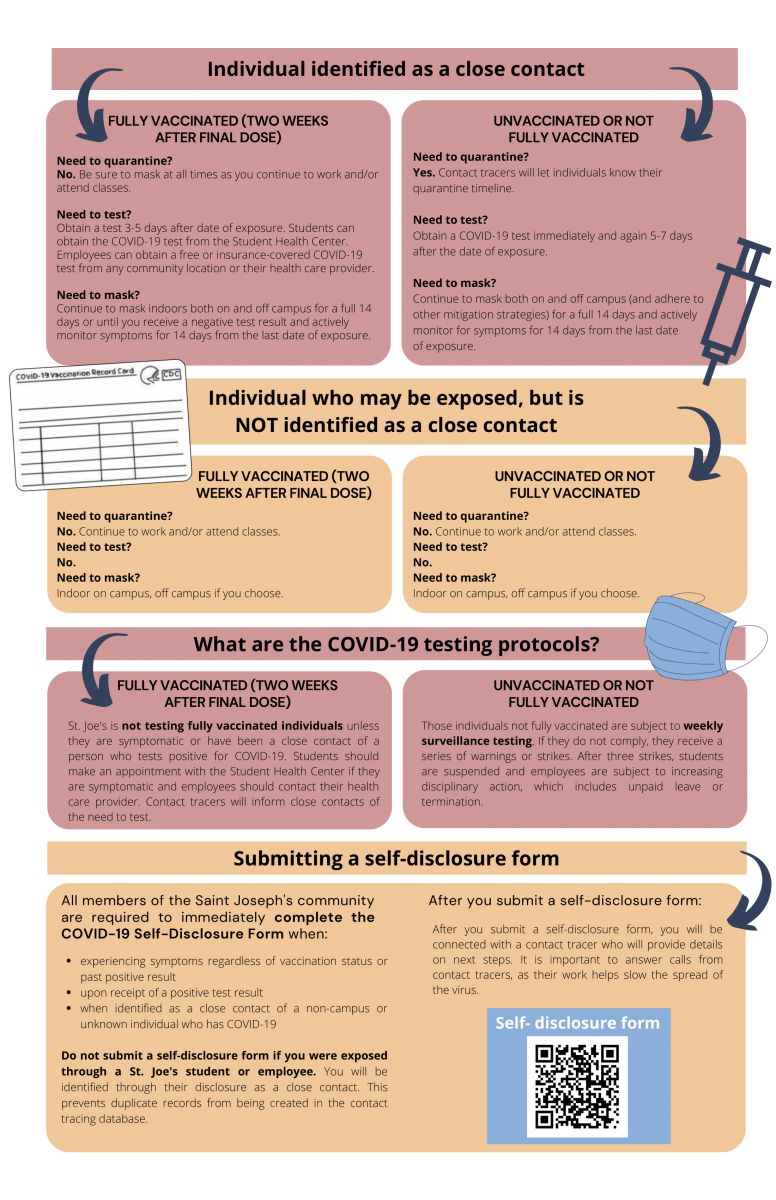As new and more contagious variants of COVID-19 emerge, some members of the St. Joe’s community are double-masking while on campus.
A Feb. 1 university announcement advised students to consider double-masking to “prevent the transmission of COVID-19.”
Double-masking refers to the practice of wearing one mask on top of another. Recently, double-masking has become more popular, with public health officials like Dr. Anthony Fauci, director of the National Institute of Allergy and Infectious Diseases, recommending the wearing of two masks to add an extra layer of protection. The Centers for Disease Control and Prevention (CDC) issued a public recommendation on the issue Feb. 10, writing that “… fitting a cloth mask over a medical procedure mask … substantially improved source control and reduced wearer exposure.”
Divya Balasubramaniam, Ph.D., associate professor of economics, is teaching her courses in a hybrid format this semester. Although Balasubramaniam does not require students in her in-person sections to double-mask, she said she recognizes how the new trends in protective measures are “forward looking” with possible benefits.
“Thinking like an economist, [double-masking] is about the marginal benefit versus marginal cost,” Balasubramaniam said. “Wearing a mask definitely has benefits, so double-masking, I believe, is dependent on other factors like whether you have a good quality mask or whether you have a well-fitting mask.”
The need for double-masking has increased, in part, due to new, more transmissible variants of COVID-19. On Jan. 15, Penn Medicine reported that the B.1.1.7. variant of COVID-19, first identified in the United Kingdom, had been found in southeastern Pennsylvania.
“Just like wearing two sweaters when it is cold out, [a second mask] adds another layer of protection,” wrote Brian Forster, Ph.D., general education program lab coordinator and chemical hygiene officer for the university, in a written response to emailed questions from The Hawk.
While on campus, Forster wears a double layer mask to provide that additional layer of protection.
“The idea of double-masking is that the medical mask on top of a cloth mask increases the chances that any virus particle could be trapped in either of those layers before getting a chance to enter you via your respiratory system,” Forster said. “Hence the double mask brings us closer to the quality of an N95 [mask].”
A number of studies from the Journal of Education and Health Promotion found that cloth masks alone are less effective than surgical masks and medical-grade masks, like N95s or KN95s.
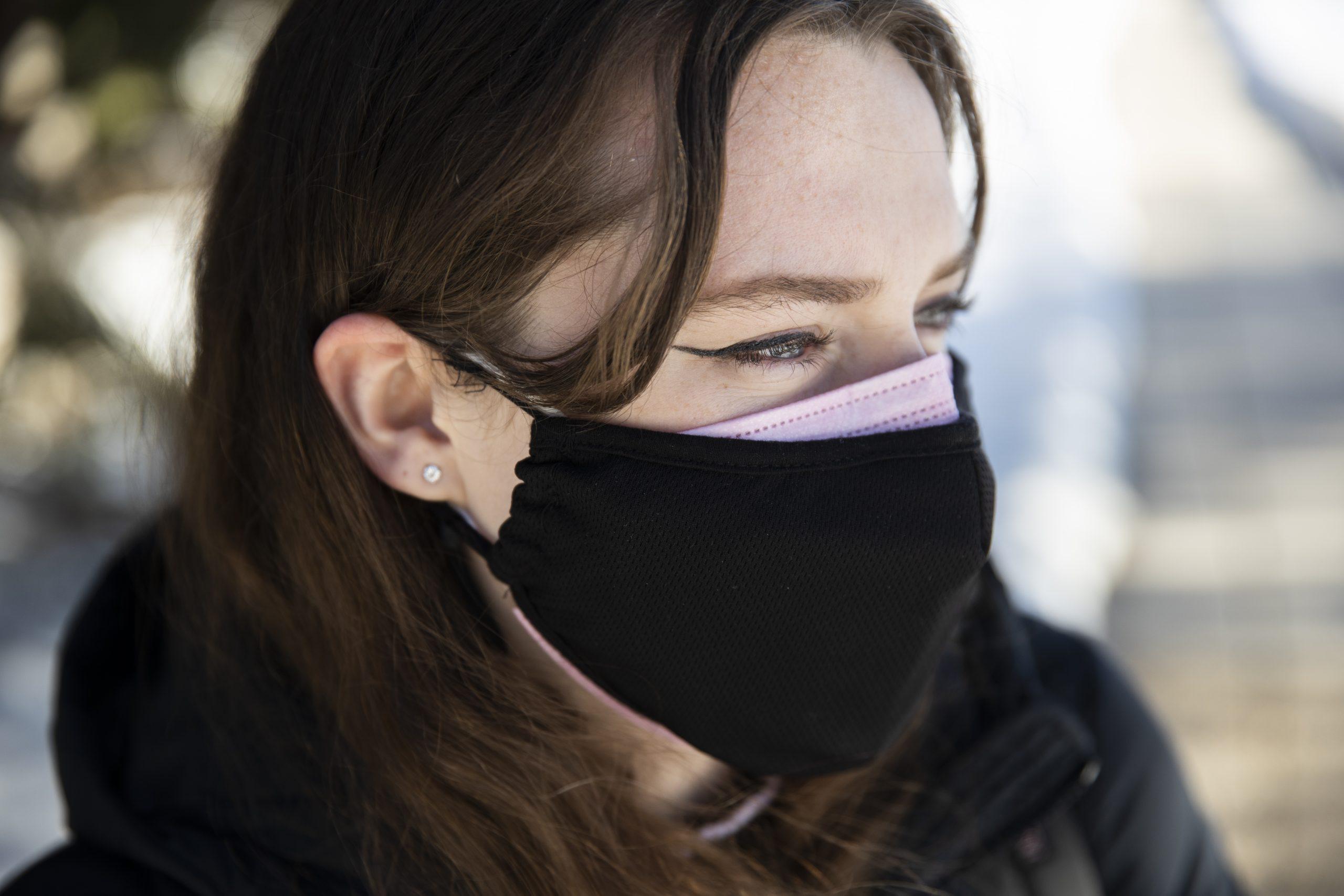
For some students, double-masking is especially important in spaces with a denser population, like classrooms and residence halls.
“When I know I’m going to a club meeting or a class where there are people, I usually double-mask because there’s nothing to lose and it’s extra protection,” Patrice Romano ’24 said. “Especially seeing other regional universities, like what’s going on with their case numbers, [I’ll do] anything just to stay on campus.”
At other Philadelphia-area schools, cases are increasing. As of Feb. 8, Villanova University reported an estimated 504 active COVID-19 cases on campus, and the University of Pennsylvania reported 222 students in isolation with COVID-19.
“Although we have the resources to manage the current situation, these numbers are not sustainable,” John Stack, O.S.A., vice president for Student Life at Villanova, wrote in a Jan. 31 email to students.
Stack added that if the numbers continue to go up, Villanova President Peter Donohue, O.S.A., “will have no option but to end the semester on campus.”
When double-masking, Romano said she wears a two-ply reusable mask with a one-ply reusable mask on top to give herself three layers of protection. Romano said she double-masks when going to classes, club meetings, the gym or visiting with her grandparents, six feet apart and outside.
“When I’m in a high-risk situation—if there are more people or higher-risk people—I think it’s wise to [double-mask],” Romano said.
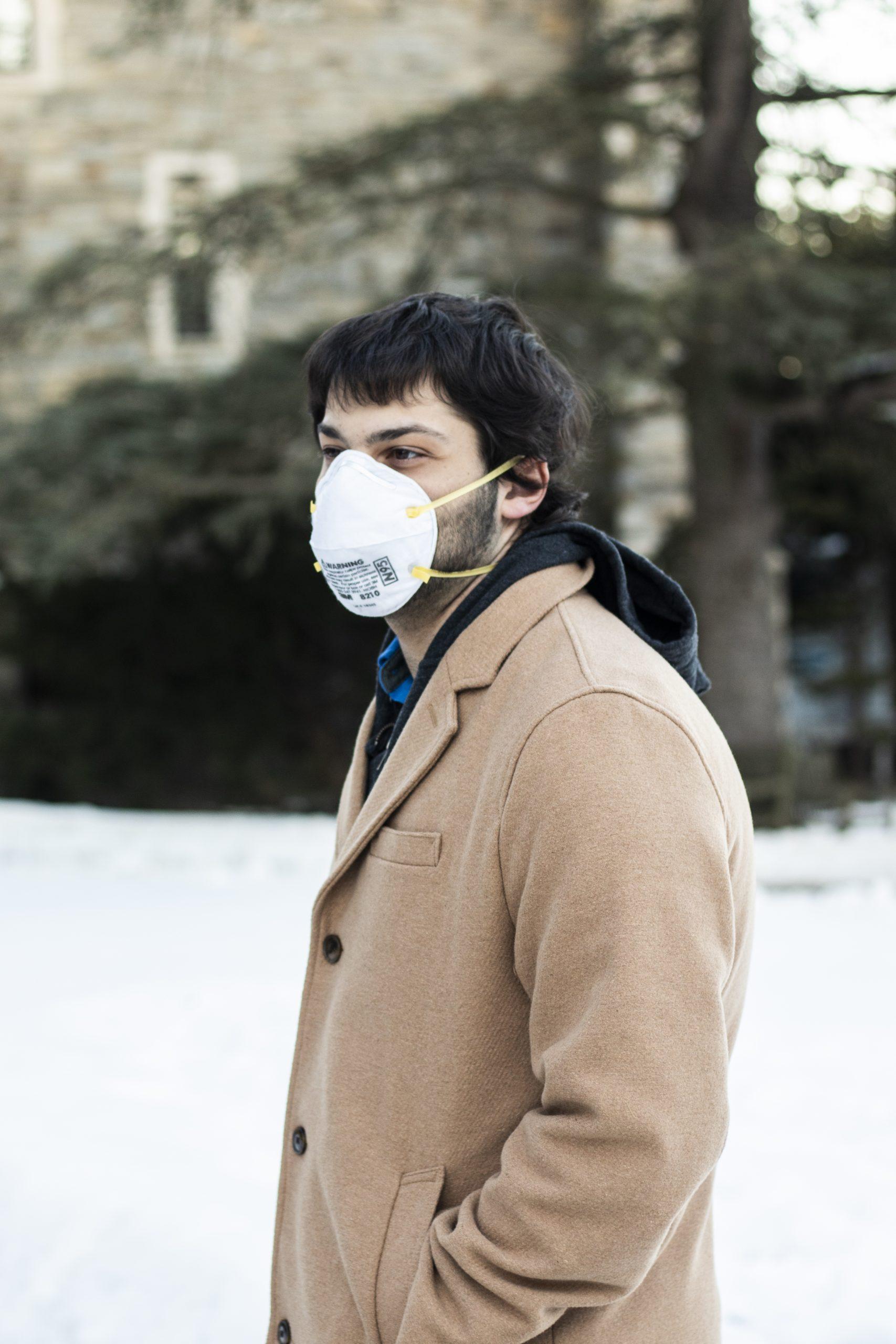
Jessica Gonzalez ’22 started double-masking after reading the university announcement and seeing advice from health professionals like Fauci.
Gonzalez wears a surgical mask with a cloth mask over that while attending class and or shopping at the grocery store.
“After [hearing the recommendation], I did decide to double-mask,” Gonzalez said. “My mom also works at a hospital, so she said if I decide to come home, she would rather I double-mask at school so she knows that I’ve been safer.”
Jordan Butt ’21 said he prefers an N95 mask. Butt started wearing an N95 when he realized masks would be part of the foreseeable future. While he said he thinks if people wore higher-grade masks in general, they could avoid double-masking, he would also prefer that students simply wear their masks properly.
“For starters, I wish more people would just wear the mask over their nose,” Butt said.
Update: This story was updated to reflect the CDC report issued Feb. 10.













































